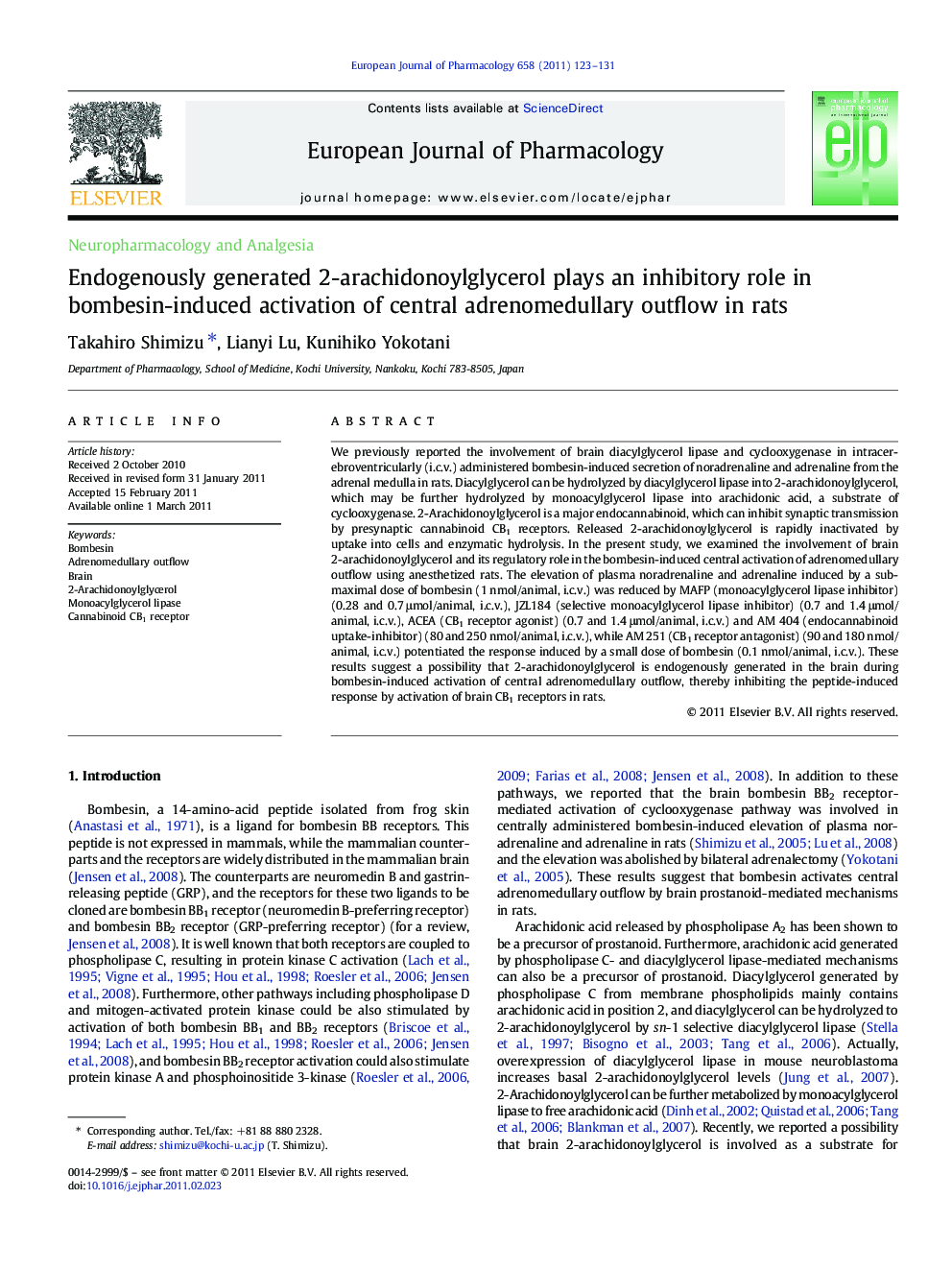| Article ID | Journal | Published Year | Pages | File Type |
|---|---|---|---|---|
| 2532937 | European Journal of Pharmacology | 2011 | 9 Pages |
We previously reported the involvement of brain diacylglycerol lipase and cyclooxygenase in intracerebroventricularly (i.c.v.) administered bombesin-induced secretion of noradrenaline and adrenaline from the adrenal medulla in rats. Diacylglycerol can be hydrolyzed by diacylglycerol lipase into 2-arachidonoylglycerol, which may be further hydrolyzed by monoacylglycerol lipase into arachidonic acid, a substrate of cyclooxygenase. 2-Arachidonoylglycerol is a major endocannabinoid, which can inhibit synaptic transmission by presynaptic cannabinoid CB1 receptors. Released 2-arachidonoylglycerol is rapidly inactivated by uptake into cells and enzymatic hydrolysis. In the present study, we examined the involvement of brain 2-arachidonoylglycerol and its regulatory role in the bombesin-induced central activation of adrenomedullary outflow using anesthetized rats. The elevation of plasma noradrenaline and adrenaline induced by a sub-maximal dose of bombesin (1 nmol/animal, i.c.v.) was reduced by MAFP (monoacylglycerol lipase inhibitor) (0.28 and 0.7 μmol/animal, i.c.v.), JZL184 (selective monoacylglycerol lipase inhibitor) (0.7 and 1.4 μmol/animal, i.c.v.), ACEA (CB1 receptor agonist) (0.7 and 1.4 μmol/animal, i.c.v.) and AM 404 (endocannabinoid uptake-inhibitor) (80 and 250 nmol/animal, i.c.v.), while AM 251 (CB1 receptor antagonist) (90 and 180 nmol/animal, i.c.v.) potentiated the response induced by a small dose of bombesin (0.1 nmol/animal, i.c.v.). These results suggest a possibility that 2-arachidonoylglycerol is endogenously generated in the brain during bombesin-induced activation of central adrenomedullary outflow, thereby inhibiting the peptide-induced response by activation of brain CB1 receptors in rats.
